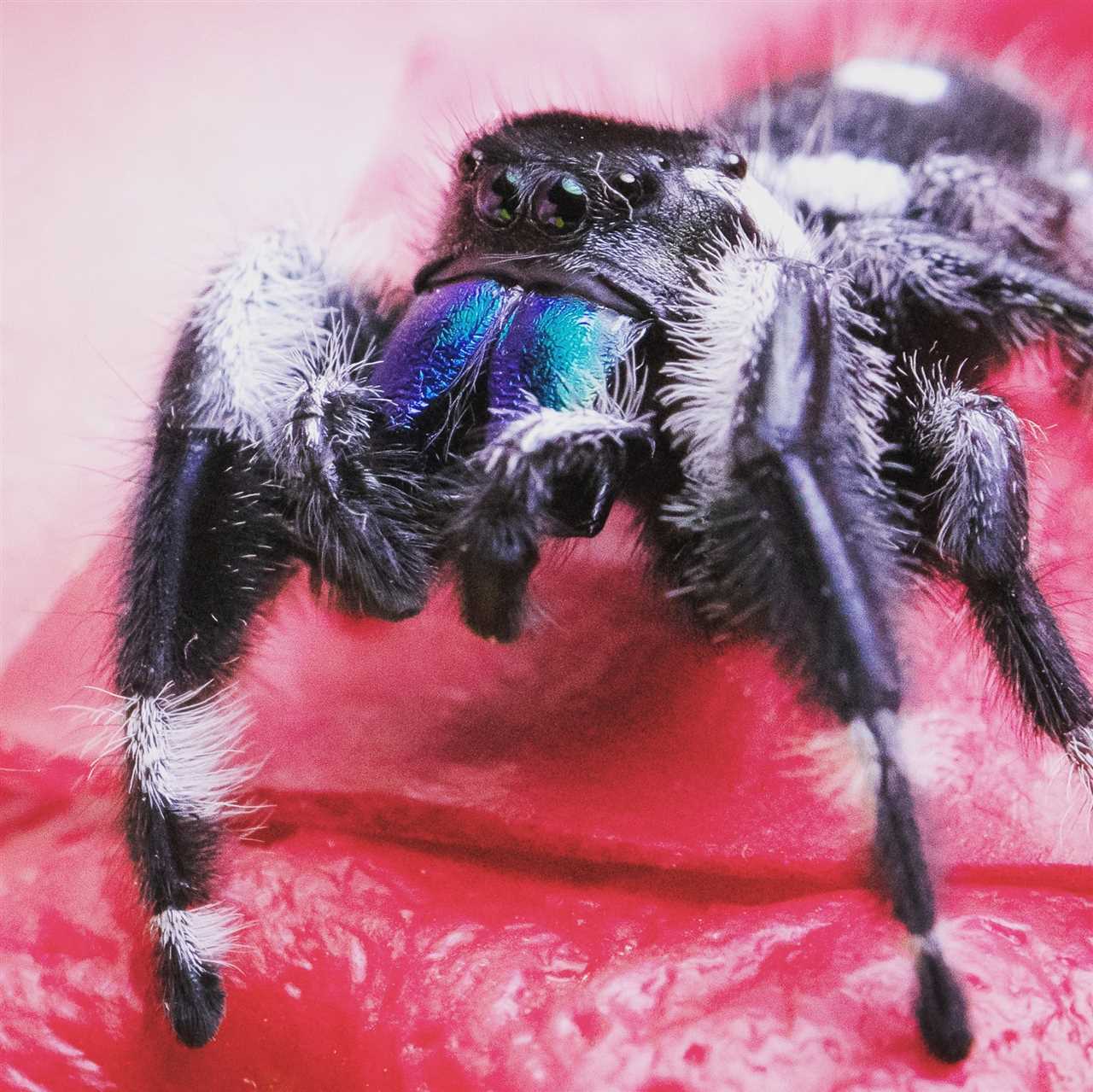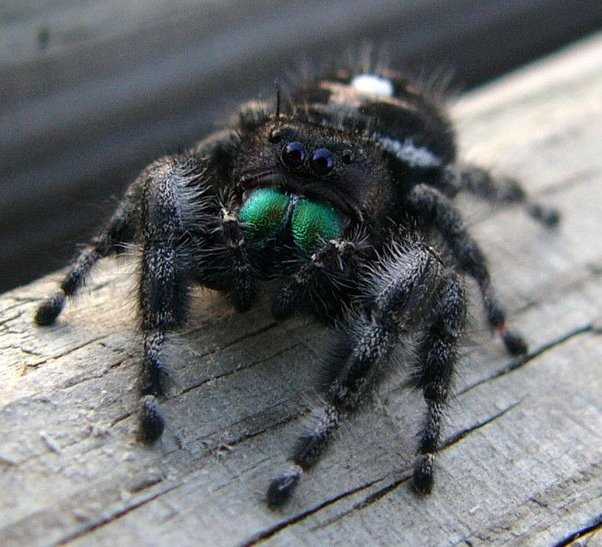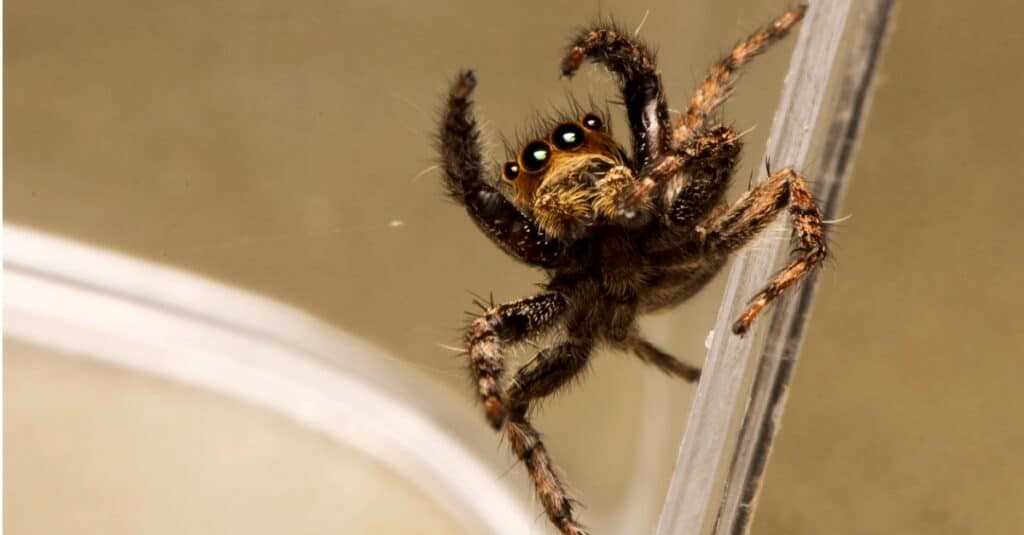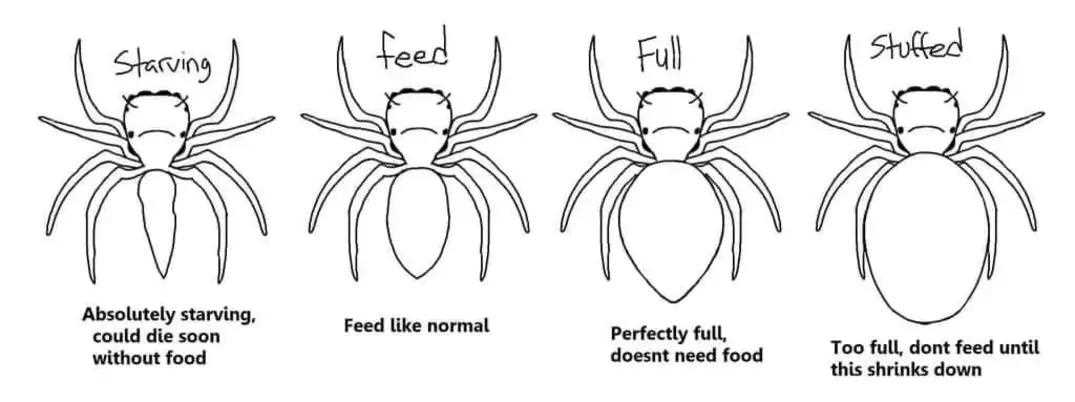
Feeding your jumping spider a diet of live insects is crucial for their overall well-being. Live insects provide the necessary stimulation and exercise that these agile creatures require. Additionally, hunting live prey allows them to practice their natural hunting instincts, which is essential for their survival in the wild. Watching your jumping spider patiently stalk and capture its prey can be both exciting and educational!
When selecting feeder insects for your jumping spider, consider the size of the spider and the size of the prey. It is crucial to offer prey that is around the same size or slightly smaller than your spider. This ensures that your spider can successfully capture and consume its meal without any risk of injury.
Natural Diet of Jumping Spiders
One of the main sources of food for jumping spiders is mealworms. These small, worm-like larvae are high in protein and provide essential nutrients for the spiders. Mealworms can be easily purchased from pet stores or online, and they are relatively inexpensive.
Nutritional Requirements of Jumping Spiders
Protein Content
Jumping spiders are carnivorous and feed on a variety of insects. The primary source of protein in their diet comes from the insects they consume. Crickets, flies, and mealworms are some common feeder insects that provide a good amount of protein.
Vitamin and Mineral Needs
In addition to protein, jumping spiders also require a range of vitamins and minerals to support their overall health. These include vitamins such as vitamin D, vitamin B12, and vitamin E, as well as minerals like calcium and potassium. Ensuring that their diet is diverse and includes various feeder insects can help meet these requirements.
Feeding Techniques
Factors to Consider When Choosing a Diet for Your Jumping Spider
1. Size of the Prey
When selecting a diet for your jumping spider, consider the size of the prey. Jumping spiders are small creatures and their jaws are not designed to handle large prey. It is best to choose smaller feeder insects such as flies, fruit flies, or small crickets that are of appropriate size for your spider.
2. Nutritional Value
Another important factor to consider is the nutritional value of the prey. Different insects offer different nutritional profiles, and it’s essential to provide a varied diet to ensure your jumping spider gets all the necessary nutrients. For example, mealworms are a good source of protein and fat, while crickets offer high amounts of calcium. Offering a combination of prey items will help meet your jumping spider’s nutritional needs.
3. Live Prey vs. Pre-Killed
Jumping spiders are active hunters and prefer to hunt live prey. The movement of the prey stimulates their hunting instincts and provides mental stimulation. Therefore, it is recommended to feed your spider live insects whenever possible. However, if you are concerned about the wellbeing of the feeder insects or prefer not to handle live insects, pre-killed insects can also be offered. Just make sure to remove any dead insects from the enclosure promptly to prevent rotting and the potential growth of harmful bacteria.
4. Variety and Enrichment
Offering a variety of prey items not only helps to meet your jumping spider’s nutritional needs but also provides enrichment. Just like humans, spiders can benefit from a diverse diet. Additionally, having a variety of prey items can prevent your jumping spider from becoming too selective or developing feeding aversions.
5. Quality of Feeder Insects
Lastly, when choosing feeder insects for your jumping spider, it’s crucial to consider their quality. Purchase insects from reputable sources to ensure they are healthy, free from harmful pesticides or other chemicals, and not carrying any diseases. Providing high-quality feeder insects will contribute to the overall health and well-being of your jumping spider.
By considering these factors, you can provide a well-balanced and nutritious diet that meets the needs of your jumping spider and promotes their overall health and longevity.
Feeder Insects for Jumping Spiders
Choosing the right feeder insects for your jumping spider is vital to ensure a healthy and balanced diet. One of the most common and nutritious feeder insects for jumping spiders are mealworms. Mealworms are easily available and provide a good source of protein, fats, and minerals. They can be purchased from pet stores or online and can be offered to your spider either alive or dead.
In addition to mealworms and crickets, there are other feeder insects that can be included in your jumping spider’s diet. These include fruit flies, small flies, and small moths. These insects are smaller in size and can be a good option for smaller spider species or spiderlings.
It is recommended to purchase feeder insects from reputable sources to ensure they are free from diseases or parasites. You can also choose to breed your own feeder insects at home, which can be a cost-effective option in the long run.
Remember to always monitor your jumping spider’s feeding habits and adjust their diet accordingly. If your spider is not showing interest in one type of feeder insect, try offering a different option to see if they prefer it. Providing a varied and balanced diet will help keep your jumping spider healthy and thriving.
Supplementing the Diet of Your Jumping Spider
Feeder Insects
The main feeder insects commonly used to feed jumping spiders are crickets, flies, and mealworms. These insects are easily available in pet stores and can be purchased alive or frozen.
Jumping spiders are agile hunters and enjoy the challenge of chasing down their prey. Live insects, such as crickets and flies, provide mental and physical stimulation for your spider. It is recommended to feed live insects occasionally to satisfy their hunting instincts.
Additionally, mealworms are a good source of protein for jumping spiders. They can be purchased in bulk and stored in the refrigerator to ensure a steady supply. Mealworms are easily consumed by jumping spiders and provide essential nutrition.
How to Feed

When feeding your jumping spider, ensure that the feeder insects are the appropriate size. The insects should be smaller than the spider’s body to prevent choking or injury. It is always better to offer smaller prey items as it reduces the risk of overfeeding.
Place the feeder insects inside the spider’s enclosure, making sure they are easily accessible. You can use small containers or feeding dishes to separate the insects from the spider, allowing them to hunt and capture their prey.
Supplementing with Gut-loaded Insects
Gut-loading is the process of feeding the feeder insects a nutrient-rich diet before offering them to your jumping spider. This practice helps ensure that the spider receives a higher nutritional value from its prey.
Feeder insects can be fed with commercially available gut-loading diets or a combination of fruits, vegetables, and grains. This will enhance the nutritional content of the feeder insects and, in turn, benefit the spider’s health.
By supplementing the diet of your jumping spider with a variety of feeder insects and incorporating gut-loading techniques, you can provide a balanced and nutritious meal for your spider. Remember to always observe your spider’s eating habits and adjust the diet as needed to maintain optimal health.
Common Dietary Mistakes to Avoid
1. Exclusively Feeding Crickets
2. Feeding Only Dead Prey
Jumping spiders are accustomed to hunting and capturing live prey in the wild. Feeding them only dead prey, such as mealworms, can result in a lack of stimulation and exercise. It’s recommended to offer live insects as part of their diet to mimic their natural hunting behavior and keep them mentally and physically active.
3. Overfeeding

4. Neglecting Gut Loading
5. Failing to Supplement

While feeder insects can provide a good source of nutrition for your jumping spider, they may not meet all of its dietary requirements. It’s beneficial to supplement their diet with other sources of nutrients, such as powdered supplements or small prey items like fruit flies. This ensures that your spider receives a well-rounded and balanced diet.
By avoiding these common dietary mistakes and providing a varied and balanced diet, you can help ensure the health and longevity of your jumping spider. Remember to consult with a veterinarian or an experienced spider owner for specific dietary recommendations based on the species of your spider.

I’m Lena Adams—a product of an unconventional upbringing in the African wilderness. My father, a daring explorer of African wildlife, sparked my fascination with reptiles, a passion that intertwined with the tragic loss of my mother during an expedition, leaving an indelible mark on my life. Driven to understand the creatures that captivated my parents, I embarked on my journey, sharing insights about reptiles, frogs, and lizards on my website. Through my explorations and conservation efforts, I honour my family’s legacy while seeking connections—to the creatures, nature, and the mother whose presence I yearn to understand.
